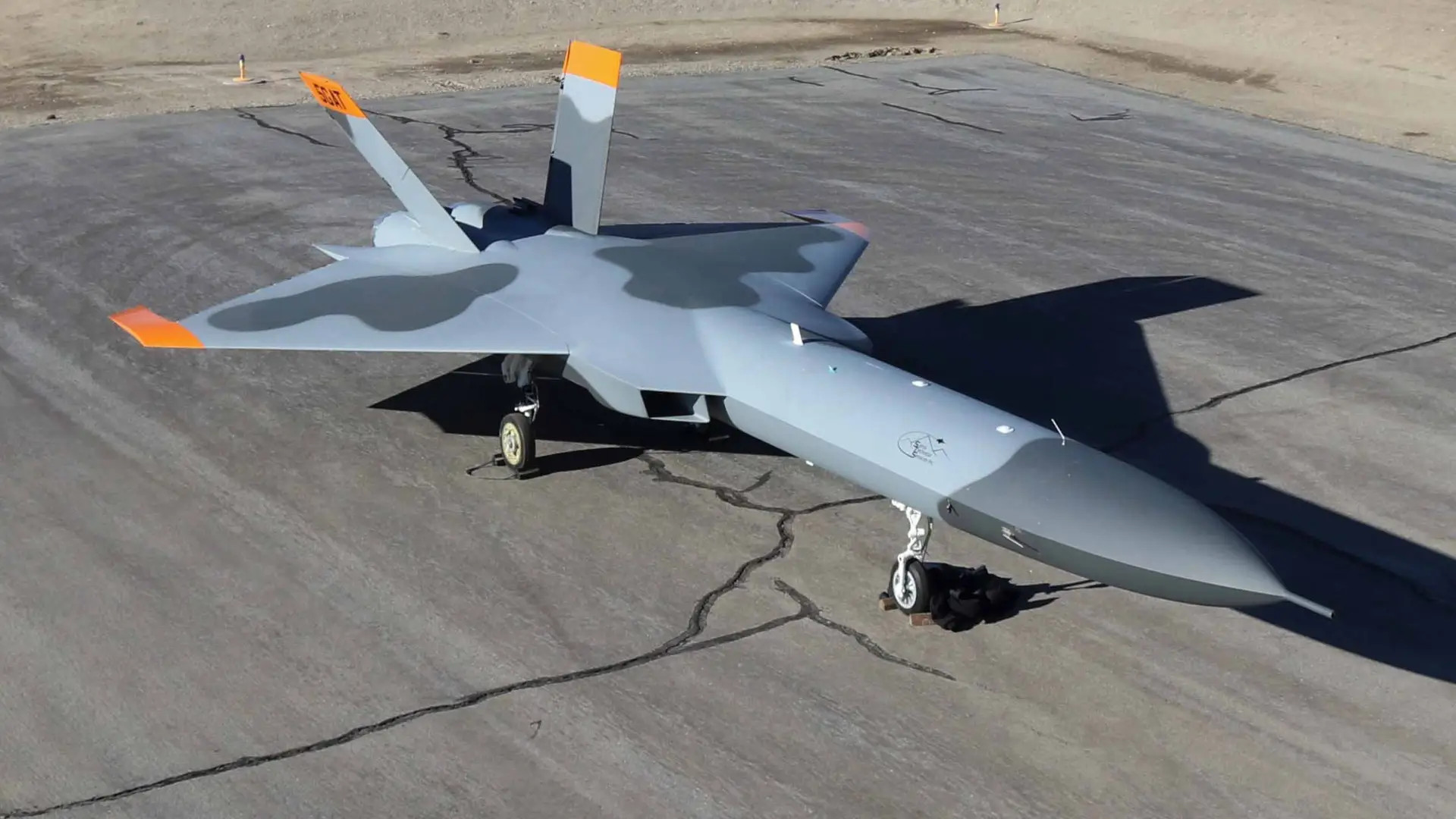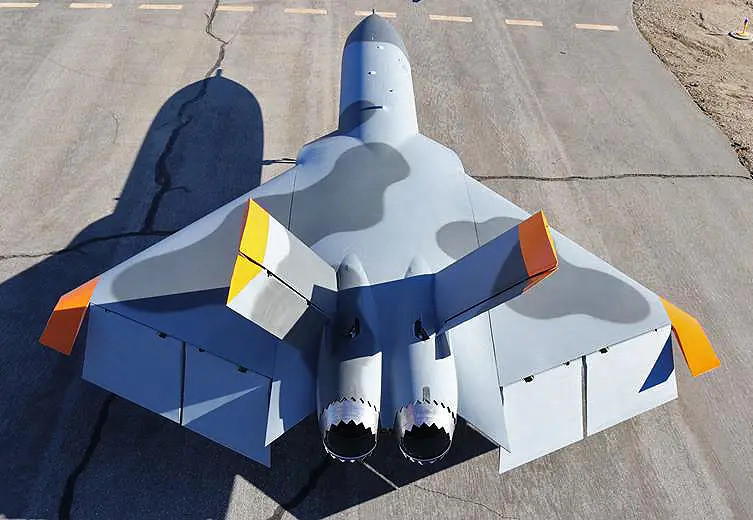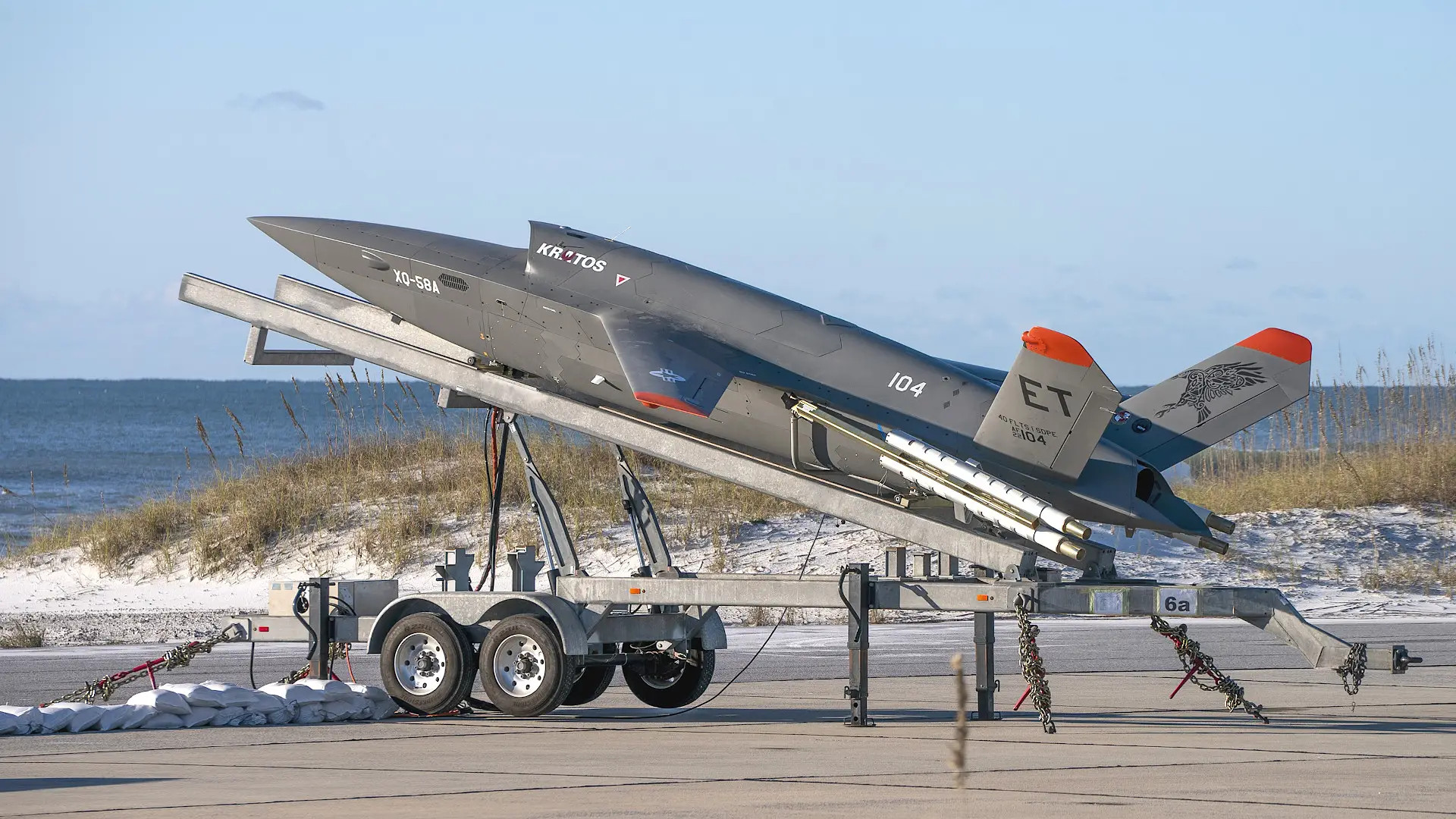Kratos has developed “multiple new configurations” of its stealthy XQ-58A Valkyrie drone, the company has confirmed. While it has so far not provided details of these further versions of the Valkyrie, they point to the possibility of XQ-58-based platforms being tailored for the U.S. Air Force’s Collaborative Combat Aircraft drone program or CCA, which aims to field artificial intelligence-enabled and weaponized unmanned fighter companion vehicles, similar to the ‘loyal wingman’ concept.
In an article yesterday by Aviation Week’s Steve Trimble, Steve Fendley, president of Kratos’ Unmanned Systems Division, disclosed that: “There are some additional configurations relative to the baseline Valkyrie that’s been in the press that everybody has seen.”

That baseline XQ-58 Valkyrie, according to Kratos, has an overall length of 30 feet, a wingspan of 27 feet, a maximum range of around 3,000 miles and a maximum launch weight of 6,500 pounds (including up to 600 pounds in its internal payload bay and/or another 600 pounds under the wings). It has a subsonic cruising speed of Mach 0.72 and can achieve a maximum speed of around Mach 0.85.
Referring to the still-mysterious new configurations, Fendley told Aviation Week: “It would be fair to conclude that the public data sheet on Valkyrie is maybe not the only Valkyrie that exists.”

At the same time, Fendley admitted that he was not able to talk about the specifics of the CCA, or how the Valkyrie, or versions of it, might fit into it.
Regardless, some kind of iteration of the Valkyrie could well be a candidate for the CCA program, although it could need some changes.

After all, an Air Force request for information for the CCA program issued last month specified a drone powered by an engine developing between 3,000 and 8,000 pounds of thrust. The baseline XQ-58 engine produced around 2,000 pounds of thrust, suggesting that it’s a Williams FJ33 turbofan, or similar. It isn’t a reach in terms of logical speculation that Valkyrie could be bulked up a bit in size and engine thrust so that it can carry a bit more payload and do so faster in order to keep up with cruising jet fighters.
The service foresees its CCAs having a number of primary missions, at least to start with, including acting as “weapons trucks,” electronic warfare platforms, and sensor nodes, in cooperation with crewed tactical jets.

Aside from the engine thrust requirement, the recent Air Force request for information revealed more details of the very broad specifications embodied in the CCA program, including an apparent emphasis on range and speed, as well as being able to take off from shorter runways.
The latter point is of particular interest, as the XQ-58, and other Kratos products, are completely runway-independent designs, relying on catapult launch or air launch. In the case of the Valkyrie, it uses a rocket-assisted takeoff method via a static ground-based launcher. The drone uses a parachute recovery system to get back on the ground, with inflatable airbags helping to cushion it when it touches down.

Aside from the “new configurations” referred to by Fendley, Kratos is already working on refinements to its Valkyrie drone. Earlier this year, the company confirmed it’s working on a second batch of 12 XQ-58s, some of which will be completed to a Block 2B configuration. It’s possible, too, that the Block 2B might also bring a new powerplant, and potentially other new features too.
It’s also worth recalling that another operator, the U.S. Marine Corps, has plans to evaluate the Valkyrie in a range of different missions, testing them as highly autonomous surveillance and reconnaissance assets, electronic warfare platforms, and wingmen for crewed fighters, including in kinetic roles. The first flight of a Marine XQ-58 took place earlier this week, as we have previously reported on.

Marine Corps flight tests of the Valkyrie have “objectives that include evaluating the platform’s ability to support a variety of intelligence, surveillance, and reconnaissance (ISR) missions; the effectiveness of autonomous electronic support to crewed platforms; the potential for AI [artificial intelligence]-enabled platforms to augment combat air patrols; and continuing to mature other manned-unmanned teaming (MUM-T) capability objectives,” according to a press release from the service.

Intriguingly, Kratos may have another drone now in its portfolio that could be developed into something well suited to future CCA requirements.
This is the Fifth Generation Aerial Target (5GAT), a stealthy UAS that was developed by Sierra Technical Services (STS), a company that has recently been acquired by Kratos.

In its original form, the 5GAT is an advanced target drone, designed to replicate high-end Chinese and Russian fighters, to prove out future sensors and missiles. You can read about the drone in detail here.
Unlike the Valkyrie, the 5GAT takes off and lands from a runway, like a crewed fighter. With a size comparable to an F-5 fighter, a variation of the 5GAT design may lend itself well to the CCA program. This is especially so considering these drones were built to be targets, with a low cost and expendability in mind.

Speaking to Aviation Week about the possibility of further developing the 5GAT design, Fendley was tight-lipped but did say that “There are certainly characteristics and elements of 5GAT that become very interesting for a wide range of other applications.”
CCA is unlikely to result in just a single aircraft, even early on. Kratos offering a family of systems that feature both runway dependent and runway independent types could be highly attractive considering the challenges the U.S. would face when it comes to airfield access in the Pacific.
While the Air Force’s CCA requirements are still evolving, the service has already said that it wants to acquire a fleet of at least 1,000 CCAs, if not many more. That figure is based on a notional concept of operations that combines pairs of the drones with each of 200 new sixth-generation crewed stealth combat jets — a design being developed under the Next Generation Air Dominance (NGAD) program — and 300 F-35A Joint Strike Fighters. 4th generation fighters, like the F-15 and F-16, could arguably benefit from CCAs just as much, if not more than their 5th generation counterparts, as well.
Clearly, the program offers massive opportunities for defense industry and it could disrupt the stranglehold ‘prime’ contractors have on the high-performance military aircraft market.
With the 5GAT having joined the Valkyrie in its portfolio, Kratos looks increasingly positioned to help the Air Force not only continue its autonomous aircraft testing efforts, which already involve the XQ-58 and multiple other types that it produces, but also to make an impact on the CCA program, that promises to do nothing less than revolutionize the way that crewed aircraft operate in conjunction with drones.
Contact the author: thomas@thedrive.com
